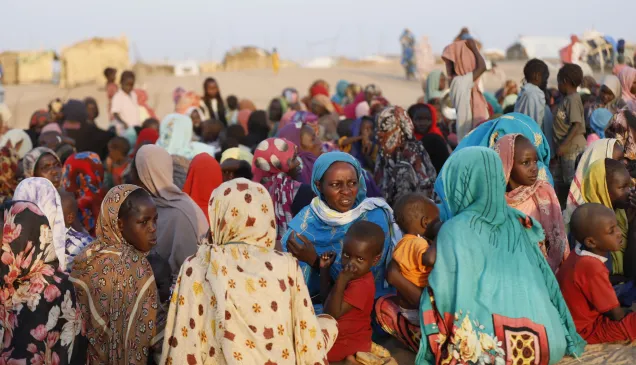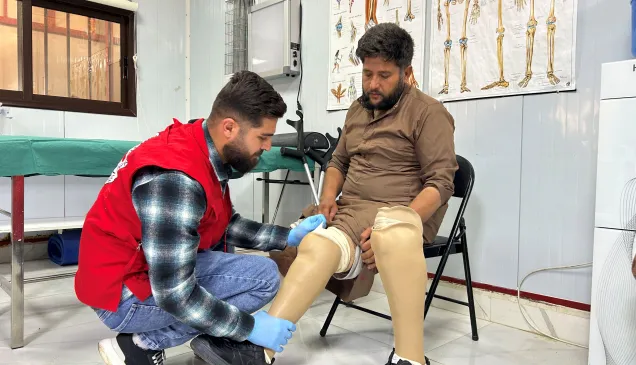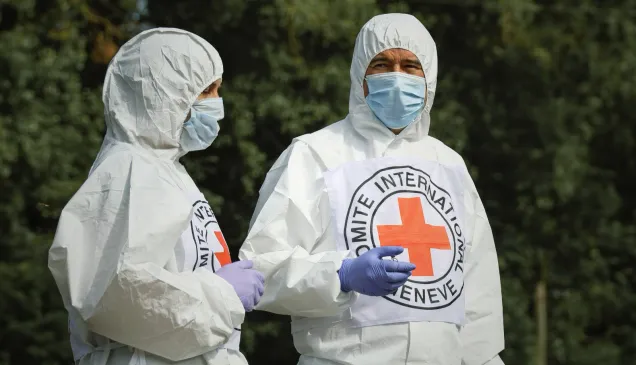ICRC voices: Contending with Syria’s deadly legacy of war
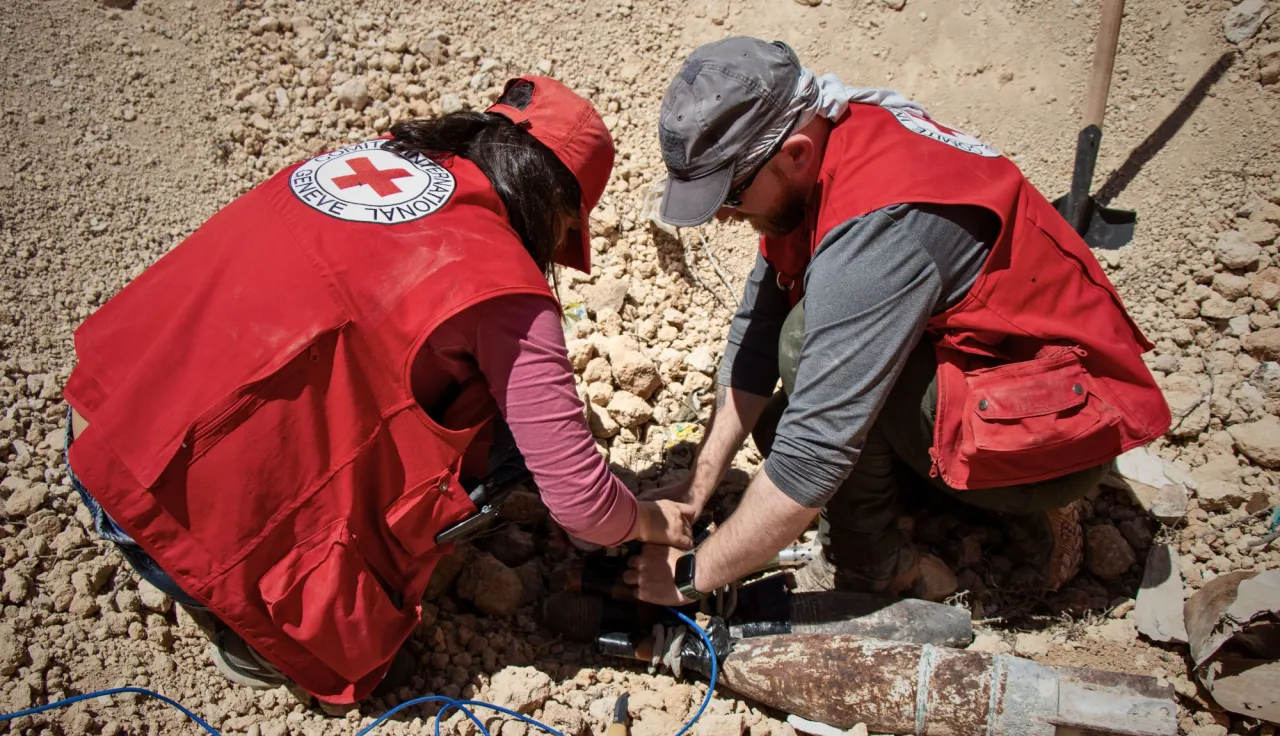
In a series of online articles, the ICRC team for the UK and Ireland interviews delegates working across the world. This month, we spoke to William Carmichael, from County Antrim in Northern Ireland, who works as a weapons contamination coordinator in Syria.
A tense encounter
‘I was in Darayya training colleagues from the Syrian Arab Red Crescent (SARC), when I saw three children walking towards us carrying what looked like a large can of food. As they came closer, I realised it was the main charge of an improvised explosive device – an IED.
‘We knew the area was contaminated with explosive ordnance but seeing that was still a shock. I asked the kids, who had no idea what it was, to put it down slowly. It was a tense moment. You could see the explosives inside the casing through a hole in the top, with two detonators sticking out. A detonator is the most dangerous part of the IED because it’s the most sensitive. If the children had dropped or knocked it, there was a risk it could have exploded.
‘After they put the IED down we gained the necessary approvals to remove it. I used what we call the ‘hook and line’ method: gently attaching a piece of rope around the two detonators to tug them out of the explosive from a safe distance. Once the detonators and the main charge were separated, we moved them both to an isolated area where we were able to safely dispose of – that’s to say, blow up – the IED. That was the first explosive item I disposed of in Syria.’
Little over a year later, William and his team have destroyed more than 600 items of explosive ordnance and have surveyed over 1.8 million square metres of land.
After 14 years of armed conflict, Syria’s landscape is littered with dangerous items like this: memories of a violent conflict which fractured the country into pieces. Now under a new government, many traces of the conflict remain. From the suburbs of Damascus, Homs, and Aleppo to the olive groves of Idlib, swathes of Syria that were once battlefields are still laced with deadly ordnance, threatening the lives of ordinary civilians.
The scale of contamination is huge. According to William, nobody knows the true extent of it. With so few explosive experts in the country, clearing Syria of explosive ordnance will take decades – ‘and even then, I’m being optimistic,’ he said.
Bombs, bullets, and IEDs
Having spent 15 years in the British Army - which included tours of Iraq and Afghanistan - before joining the ICRC, William is an expert in explosives. But what astounds him in Syria is the sheer scale and variety of ordnance that he has encountered, as well as the terrifying sophistication of many improvised weapons.
‘There’s small arms ammunition. There’s large calibre ammunition. There are tank and artillery projectiles, grenades both conventional and improvised, missiles, 122mm rockets, landmines and cluster munitions as well as large, airdropped bombs. Due to the number of parties involved in the conflict, these items have also been from many different countries of origin. We've disposed of a huge amount of rocket-propelled grenades, and then of course some improvised devices.
‘You can see the evolution in the manufacturing techniques for improvised devices. Having come across many simple devices, it has been eye opening to also see some very technically advanced IEDs in Syria.’
‘It’s startling knowing the age of them, the weather conditions they’ve endured, and seeing how well they still function. It’s a terrifying reminder of the ingenuity human beings will employ to kill and maim one another,’ he said.
Tweet: https://twitter.com/ICRC_uk/status/1958096941050429692
Hidden dangers
A weapon designed to kill does not lose its purpose once the fighting stops. Explosive ordnance continues to harm civilians long after the guns fall silent. Following the change in government in December 2024, many people began to return to their homes and repair their damaged houses, and by consequence stumbled upon all manner of forgotten, abandoned, and undetonated munitions.
Weapon contamination also hinders Syria's recovery, by delaying the rehabilitation of affected infrastructure which may be damaged by or contain explosive ordnance, by preventing displaced communities from returning to their homes, and by making it difficult for farmers to plough their fields without putting themselves in danger.
‘There are lots of civilians who are putting themselves at risk trying to remove explosive items from their land because they need to plant crops to provide for their family. They do it because they have no other choice, so we have to try and remove these risks for them – these explosives,’ William explained.
‘You also have children from low-income families who collect scrap metal to help earn some money. Ammunition is generally metal. They see it, they don't understand what it is, and they pick it up.’
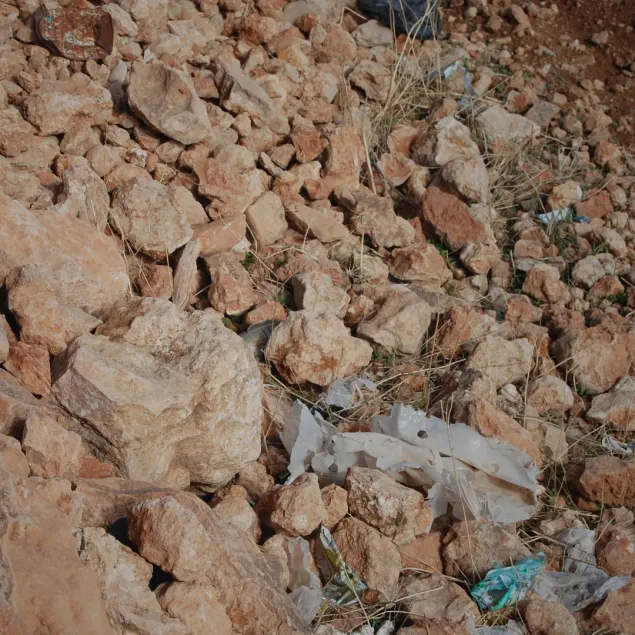
The consequences can be fatal. Since 8 December of last year, Syria has witnessed a tragic rise in casualties from explosive ordnance. Between January and June of 2025 alone, there were more than 500 reported accidents, resulting in 1,048 casualties. Unfortunately, children are one of the groups at risk due to explosive ordnance contamination. Globally, civilians constitute more than 80 per cent of casualties from landmines and explosive remnants of war, with nearly half being children, according to the Landmine Monitor Report 2024.
Data of casualties and injury patterns from local hospitals can indicate that a specific area could be contaminated with explosive ordnance. This information can point William and his team in the right direction when searching for areas to clear. As the saying goes, there's no smoke without fire – clusters of reported casualties can sometimes suggest hidden dangers. By closely monitoring this casualty data, he aims to prevent others from suffering the same fate.
William explained that the first step is conducting risk awareness sessions for the local community in partnership with the SARC. Following this, a SARC non-technical survey team might canvas the area, metre by metre, for evidence of explosive ordnance. Then, he and his team will identify and dispose of any ordnance they find. It's painstaking work - but it saves lives.
In the picture below, Will's colleague speaks with a young boy who was wounded by explosive ordnance.
Tweet: https://twitter.com/ICRC_uk/status/1958817403590119470
A different perspective on conflict
William’s transition from soldier to humanitarian has profoundly reshaped how he views conflict. Witnessing the civilian toll, he said, has added a different dimension to his perspective.
‘You were always a lot more sheltered in the military, which I know sounds very strange, but you didn't always see the lasting impact conflict has on people. In the ICRC, you see an awful lot more of how the civilian population is affected. You see how it continues to impact people for generations, for years afterwards,’ he said.
‘After leaving the army, I realised I’m a lot more of a humanitarian than I originally thought. I enjoy my job for the fact that I can do something ‘good’ for other people. When we’re removing explosive risks from local communities, you can see how genuinely appreciative they are.
‘I sometimes think back to that first IED I disposed of in Darayya, and the children who came so close to being maimed, or even killed. We have a mountain to climb before Syria is completely clear of explosive ordnance, but step by step, we’re making the country safer for children like them.’

